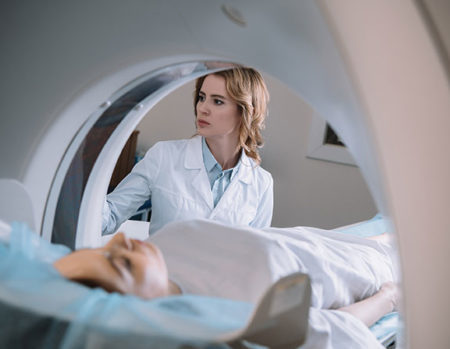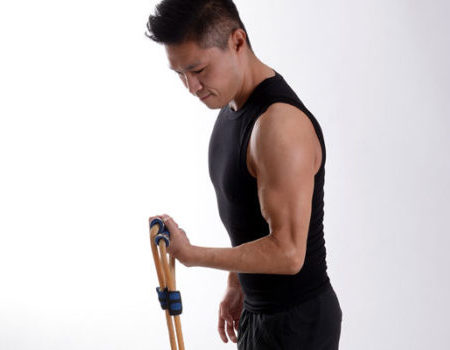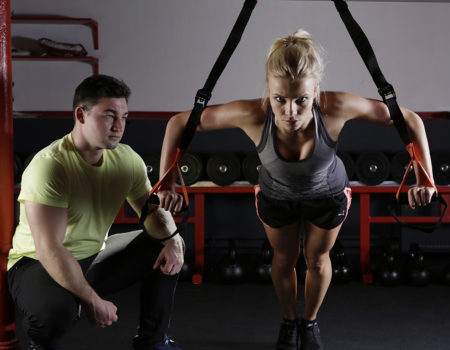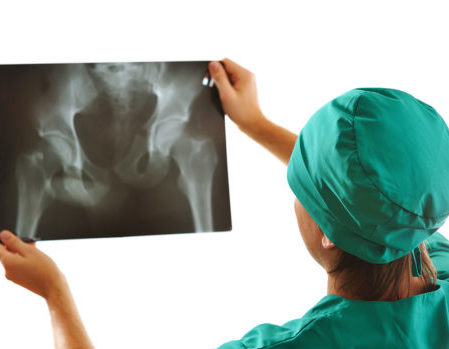Current Therapy in Foot and Ankle Surgery
Aug 21, 2019George Edward Quill, M.D. (Retired 2023)
Edited by Mark S. Myerson, M.D.
Subtalar Arthrodesis
Introduction
The single-axis subtalar joint is a hinge joining the talus and calcaneus. This joint allows the human foot to readily adapt to uneven terrain, modifies the forces of ambulation imposed upon the rest of the skeleton, and influences the performance of the more distal foot articulations as well. When the structure and function of this joint are altered by arthritis, trauma, instability, or tarsal coalition, subtalar arthrodesis may prove to be a most gratifying procedure in treating the patient’s resultant disability.
Therapeutic Alternatives
In cases of rheumatoid or osteoarthritis affecting the subtalar joint, oral anti-inflammatory medication or judicious use of intra-articular corticosteroid injection through a lateral, sinus tarsi approach may be indicated. Select patients may have arthritic subtalar symptoms allayed by shoe wear modifications or by wearing orthoses of a semi-rigid, UCBL, or short-leg variety. Even a trial of therapeutic casting may be indicated in patients whose hindfoot symptoms are both mechanical and inflammatory.
Patients with significant instability of the hindfoot of a post-traumatic (recall that the calcaneofibular ligament normally stabilizes both the tibiotalar and talocalcaneal joints), neuromuscular, or developmental nature may also benefit from orthotic management.
For select patients with talocalcaneal tarsal coalition, resection of the bar with or without interposition arthroplasty may be indicated, potentially allowing the patient to retain subtalar motion.
Arthroereisis of the subtalar joint, a procedure used to correct valgus of the hindfoot by reducing, but not eliminating motion – usually by means of interposing bone, methacrylate, polyethylene, or a staple in the sinus tarsi – has gained popularity in the podiatric literature recently. The body of existing orthopaedic literature, however, does not offer convincing evidence that this procedure does reproducibly correct pes planovalgus deformity and eliminate its symptoms.
Patients presenting with clinically significant subtalar pain and/or instability that is refractory to nonoperative care should be considered for subtalar arthrodesis.
Children four to twelve years of age with paralytic equinovalgus hindfoot deformity have classically been managed with the Grice and Green extra-articular subtalar arthrodesis since there is little interference with future growth of the foot using this procedure. Except in practices heavily weighted toward pediatric orthopaedic surgery or those located where poliomyelitis is still endemic, this procedure is rarely indicated. Many other extra-articular techniques for subtalar arthrodesis have been described, but the author prefers intra-articular procedures because of the ease with which they allow the surgeon to directly address the joint pathology and optimize correction of deformity and fixation.
Preferred Approach
The vast majority of hindfoot pathology requiring subtalar arthrodesis may be divided into feet with significant hindfoot deformity and those feet in which there is relatively good maintenance of the normal hindfoot architecture. The most common hindfoot deformities addressed with subtalar arthrodesis are diminished heel height and increased heel width – usually a result of rheumatoid deformity or, more commonly, after fracture of the talus or joint-depression type calcaneus fractures.
Heel height may be best assessed preoperatively on a standing lateral radiograph of the affected foot by measuring the distance in millimeters from the plane of support to the most cephalad portion of the talar dome and comparing this value to the contralateral, unaffected foot (Figure 1). Alternatively, one may measure the talar declination angle on a standing lateral radiograph of the foot (Figure 2). This angle is formed by the longitudinal axis of the talus and the plane of support and is a measure of the “horizontal attitude” assumed by the talus. Patients with a talar declination angle of less than 20 degrees and those with greater than an 8 millimeter loss of heel height consistently demonstrate anterior tibiotalar impingement, diminished ankle range of motion, and difficult shoe wear.
Computed tomography may also help the surgeon define subtalar pathology. The C.T. scan reproduced in Figure 3 is that of a 20-year-old man with a painful subtalar joint resulting from trauma sustained by an incompletely fused medial talocalcaneal bar.
A subtalar distraction bone block arthrodesis, as described by Carr et al, may be indicated for patients with disabling subtalar arthritis, a greater than 8 millimeter loss of heel height on the affected side, and a talar declination angle of 20 degrees or less. An in-situ subtalar arthrodesis with compression screw fixation and iliac crest bone grafting may be performed for patients who have disabling arthritis of the subtalar joint in the presence of more normal heel height and tibiotalar alignment.
In situ subtalar arthrodesis is performed with the patient in the lateral decubitus position with the affected extremity up and with the patient under a satisfactory general or spinal anesthesia. Care is taken to pad all bony prominences, an axillary roll is used in the “down” axilla, and the patient is usually securely fastened to the table with bean bag and chest braces. A pneumatic tourniquet is placed about the thigh. The affected lower extremity is prepped and draped in the usual sterile and free fashion. Simultaneously, the ipsilateral iliac crest is also prepped and draped in a separate field. An in situ arthrodesis is usually best accomplished through an incision made parallel to Langer skin lines and beginning no more than 15 millimeters distal to the anterolateral tip of the fibula. This incision is made on the anterolateral surface of the foot overlying the sinus tarsi and is very carefully carried into the subcutaneous layer, where superficial veins are carefully ligated and cuticular nerves preserved where possible. The wound should extend from the lateral border of the peroneus tertius without opening its tendon sheath to the most cephalad anterior border of the peroneal tendon sheath, taking care to identify, protect, and retract the sural nerve. The deep fascia of the foot is incised, leaving a readily identifiable layer for closure at the end of the case. The contents of the sinus tarsi are excised sharply with a knife and rongeur. The plane of dissection need not expose the calcaneocuboid or talonavicular joints, and the proximal origin of the intrinsic extensors is reflected only a short distance as a distally-based flap. I prefer to use sharp, interchangeable chisel blades (Synthes, Paoli, Pennsylvania) to remove the remaining articular cartilage on all facette surfaces of the talar and calcaneal side of the subtalar joint. These chisels may also be carefully used to resect any wedges necessary for making planar apposable surfaces and correcting preoperative deformity.
I find it helpful to use a small lamina spreader in the posterior facette to afford better exposure of the middle and anterior facettes. Alternatively, when I wish to expose the posterior surfaces of the talus and calcaneus, I place the lamina spreader more anteriorly in the arthrodesis site. Division of the calcaneofibular ligament and retraction of the peroneus brevis and longus posteriorly will also aid in this exposure.
Once the reduction of the arthrodesis site is deemed congruous with the intended position of subtalar arthrodesis being approximately 3 to 5 degrees of valgus, the tourniquet may be deflated while the surgeon harvests autogenous iliac bone graft.
For the severely valgus hindfoot with a normal ankle and a supple forefoot, the position of choice is indeed 5 degrees of valgus, leaving the entire foot plantigrade and using cancellous and corticocancellous bone graft to fill the void within the subtalar arthrodesis site created when the os calcis is brought out of its severe valgus preoperative position. Conversely, if the hindfoot had been in a varus position preoperatively, resection of the appropriate subtalar bone and division of the ligamentous tissues will still allow the hindfoot to be brought over into a more normal 5 degrees of valgus even with this lateral approach.
Once the iliac graft has been harvested and that wound closed, the surgeon should irrigate the foot wound and reinflate the tourniquet if necessary after exsanguination by gravity. Cancellous graft is placed and the hindfoot held in the appropriate position, and then internal fixation added. The author prefers a 7.0 millimeter cannulated screw system (Synthes, Paoli, Pennsylvania) for fixing the talocalcaneal arthrodesis site. The guide wire can either be inserted in a dorsoplantar direction through the talar neck across the arthrodesis site and into the tuberosity of the os calcis, or the threaded guide wire may be passed percutaneously through the posterior-inferior os calcis across the arthrodesis site, engaging subchondral bone of the talar dome. Intra-operative x-rays may be necessary to ascertain the appropriate screw length. If a screw with a short thread (16 millimeters) is chosen and inserted in the appropriate fashion, rigid fixation and compression across the arthrodesis site may be obtained with as few as one and certainly no more than two screws. The wound is usually closed over a drain, and a nonadherent, bulky, slightly compressive dressing incorporating plaster coaptation splints applied.
The technique for subtalar distraction bone block arthrodesis has recently been described by Carr et al, modifying an earlier procedure described by Gallie in 1943. The patient is positioned and the iliac crest and lower extremity draped as above. For this procedure I prefer a longitudinal incision, paralleling and just posterior to the fibula because intra-operative distraction of the hindfoot can potentially adversely affect closure of a more transverse wound. Again, one must identify and protect the sural nerve and the lesser saphenous vein. After debriding and preparing the subtalar arthrodesis site, a tricortical wedge of iliac crest is taken and contoured into the shape of a trapezoid, cutting the graft 2 to 3 millimeters higher on the intended medial side so that the subtalar joint is held distracted into slight valgus and not overcorrected into varus. This is best accomplished with the use of a large lamina spreader, and one may even obtain intra-operative x-rays to measure the amount of distraction and determine the appropriate width for the graft. Also, to prevent tilting the heel into varus with insertion of the graft, a medially-applied femoral distractor (Synthes, Paoli, Pennsylvania) may be inserted with one pin in the calcaneus and one in the tibia. The subtalar joint is thereby distracted and simultaneously tilted into valgus while the graft is inserted. Wound closure and dressing are performed in the standard fashion after the graft has been inserted and fixed with either a fully-threaded 6.5 millimeter cancellous screw or one that has threads measuring at least 32 millimeters in length, helping to maintain the distraction (see Figure 4). The compression dressing is usually changed to a light-weight, nonweight bearing cast within the first postoperative week. A full six weeks of nonweight bearing activities are usually required for proper healing, followed by four to six weeks weight bearing as tolerated in a walking cast. Clinical and radiographic union are usually apparent by ten to twelve weeks.
Complications of subtalar arthrodesis include delayed union or nonunion, but because the patient is usually allowed to weight bear across this relatively transverse arthrodesis site, these complications are rarely encountered. A meticulous operative approach should be employed to avoid post-surgical neuromata and an inordinate amount of postoperative edema. Correct alignment can be difficult to judge during bone block distraction arthrodesis with the patient in a lateral decubitus position. Furthermore, insertion of the graft may cause the heel to tilt into varus. These problems, if they do manifest themselves, can be corrected satisfactorily with a closing wedge valgus osteotomy of the calcaneus.
Patients must be told to expect some difficulty, but very little pain, while walking on uneven terrain due to the loss of normal subtalar motion after this procedure and transmission of those forces to the ankle, a hinged joint whose plane of motion does not readily accept those stresses.
Pros and Cons of Subtalar Arthrodesis
Subtalar arthrodesis through the lateral approach described above is applicable to both varus or valgus preoperative hindfoot deformities, provides a large surface area at the arthrodesis site, and is quite readily internally fixed. This procedure has a very low incidence of delayed union or nonunion with immobilization time averaging 10 to 12 weeks. This procedure offers advantages over triple arthrodesis in that the transverse tarsal joints are preserved, heel height is maintained, and abnormal heel width may be addressed by calcaneal ostectomy through the same incision.
Complications are infrequent, and one rarely sees degenerative changes in the transverse tarsal joints. In actuality, these joints usually increase their normal range of motion, as does the ankle, in a compensatory fashion after subtalar arthrodesis. Screw removal may be indicated for patients who have persistent discomfort under the tuberosity of the os calcis or in whom the distal threaded end of the screws may be close to the ankle joint or talofibular recess.
Despite these potential problems, subtalar arthrodesis in situ and the posterior distraction bone block arthrodesis techniques readily restore the length of the gastrocnemius-soleus complex, the normal talocalcaneal and tibiotalar relationships, and facilitate decompression of the peroneal tendons and subfibular recess through one wound.
Suggested Reading
- Carr JB, Hansen ST, and Benirschke SK: Subtalar Distraction Bone Block Fusion for Late Complications of Os Calcis Fractures. Foot and Ankle 9(2):81-86, 1988.
- Close JR and Inman VT: The Action of the Subtalar Joint. University of California Prosthetic Devices Res. Rep. Ser. II, Issue 24, May, 1953.
- Gallie WE: Subastragalar Arthrodesis in Fractures of the Os Calcis. J. Bone Joint Surg. 25(4):731-736, 1943.
- Grice DS: An Extra-articular Arthrodesis of the Subastragalar Joint for Correction of Paralytic Flatfeet in Children. J. Bone Joint Surg. 34A:927, 1952.
- Peters PA and Sammarco GJ: Current Topic Review: Arthroereisis of the Subtalar Joint. Foot and Ankle, Vol 10, No. 1:48-50, 1989.
- Quill G and Myerson M: Late Treatment After Calcaneal Fracture. J. Bone Joint Surg., submitted September, 1991.
Affiliations
George E. Quill, Jr., M.D.
Clinical Instructor Department
of Orthopaedic Surgery
University of Louisville School of Medicine
Director of Orthopaedic Foot and Ankle Surgery
Louisville Orthopaedic Clinic and Sports Rehabilitation Center
Louisville, Kentucky



 Our patients can receive MRI imaging onsite at both our Louisville and New Albany Clinics.
Our patients can receive MRI imaging onsite at both our Louisville and New Albany Clinics. Providing the latest advances in orthopedic surgery is our specialty.
Providing the latest advances in orthopedic surgery is our specialty. We take a unique, multidisciplinary approach to pain management.
We take a unique, multidisciplinary approach to pain management. Our physical therapists use advanced techniques to help restore strength and mobility.
Our physical therapists use advanced techniques to help restore strength and mobility.  We provide comprehensive, conservative care for a wide variety of foot and ankle conditions.
We provide comprehensive, conservative care for a wide variety of foot and ankle conditions. We offer same- and next-day care to patients with acute injuries.
We offer same- and next-day care to patients with acute injuries. Get back in the game with help from our sports medicine specialists.
Get back in the game with help from our sports medicine specialists.  Our centers are equipped with a state-of-the-art digital X-ray machine.
Our centers are equipped with a state-of-the-art digital X-ray machine.